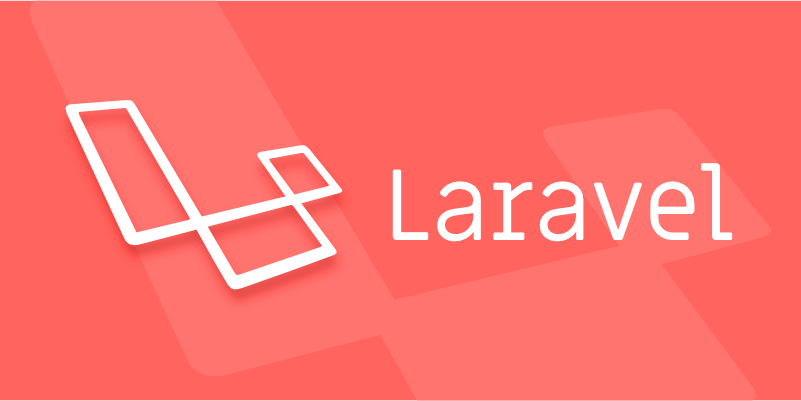Setting up and monitoring queues with Laravel Horizon
Jul 02, 2025 pm 03:16 PMLaravel Horizon is a dashboard and code-driven configuration tool designed for Laravel's Redis queues that provide in-depth insights into queue systems. 1. Before installation, make sure to use Redis as the queue driver and install Horizon through Composer. 2. After publishing its resources, you can configure monitoring options in config/horizon.php, such as connection, queue name, number of processes, etc. 3. After the installation is completed, visit /horizon to view real-time statistics and set up notification mechanisms. 4. When running in a production environment, it is recommended to use process management tools such as Supervisor to keep running, and clear and restart Horizon after deploying new code. 5. For platforms such as Forge or Vapor, built-in features can be used to simplify the deployment process.

Laravel Horizon is a powerful, built-in dashboard and code-driven configuration system for managing your Redis queues in Laravel. It gives you deep insight into your queue system — from job throughput to failure tracking and even performance monitoring. If you're using Redis as your queue driver and want more control and visibility, Horizon is the tool to use.

Installing and Configuring Laravel Horizon
First things first: make sure you're using Redis as your queue driver. Horizon only works with Redis, so that's non-negotiable. You can set this up in your .env file by setting QUEUE_CONNECTION=redis .

Once Redis is ready, install Horizon via Composer:
composer requires laravel/horizon
Then publish its assets with:

php artisan horizon:install
This creates the Horizon command in your App\Console\Kernel and sets up the views needed for the dashboard. Also, it adds a service provider so everything gets wired up automatically.
The main config file is at config/horizon.php . Here, you define your queue supervision settings — like which queues to monitor, how many workers to run per queue, and how long jobs should be allowed to run before timing out.
A common setup might look like:
'environments' => [
'production' => [
'supervisor-1' => [
'connection' => 'redis',
'queue' => ['default'],
'balance' => 'simple',
'processes' => 10,
'tries' => 3,
],
],
],You can tweak these values ??based on your app's needs. For example, high-priority queues might get more processes or shorter timeouts.
Using the Horizon Dashboard
After installing, access the Horizon dashboard by visiting /horizon in your browser. By default, it's protected in local environments only, but you can adjust middleware to allow authenticated users in production.
From here, you'll see real-time stats on:
- Active jobs
- Failed jobs
- Throughput (jobs per minute)
- Runtime averages
- Queue wait times
One of the most useful parts is the "Monitoring" tab, where you can set up alerts for stalled jobs or long wait times. For instance, if a queue starts backing up, Horizon can notify you via email or Slack — assuming you've configured those notifications.
To enable notifications, you'll need to use Laravel's built-in notification system. In your HorizonServiceProvider , you can specify who gets notified when certain events happen:
Horizon::night();
Horizon::when('failed', function ($event) {
return $event->type === 'job_failed';
});This kind of setup helps you catch bottlenecks before they become serious issues.
Running Horizon in Production
Running Horizon in production requires a process monitor to keep the supervisor running. Most people use Supervisor on Ubuntu or similar systems.
Here's a basic Supervisor config:
[program:horizon] command=php /path/to/artisan horizon directory=/path/to/laravel autostart=true autorestart=true user=www-data redirect_stderr=true stdout_logfile=/path/to/logs/horizon.log
This ensures Horizon restarts automatically if it crashes and keeps your queues running smoothly.
If you're deploying on platforms like Forge or Vapor, there are usually built-in tools or deployment hooks to manage Horizon without manual setup.
Also, remember to clear and restart Horizon after deploying new code:
php artisan horizon:clear php artisan horizon:terminate
These commands help avoid outdated jobs lingering and ensure fresh workers pick up the latest changes.
That's pretty much what you need to know to get started with Laravel Horizon. Once it's running, you'll wonder how you ever managed without it.
The above is the detailed content of Setting up and monitoring queues with Laravel Horizon. For more information, please follow other related articles on the PHP Chinese website!

Hot AI Tools

Undress AI Tool
Undress images for free

Undresser.AI Undress
AI-powered app for creating realistic nude photos

AI Clothes Remover
Online AI tool for removing clothes from photos.

Clothoff.io
AI clothes remover

Video Face Swap
Swap faces in any video effortlessly with our completely free AI face swap tool!

Hot Article

Hot Tools

Notepad++7.3.1
Easy-to-use and free code editor

SublimeText3 Chinese version
Chinese version, very easy to use

Zend Studio 13.0.1
Powerful PHP integrated development environment

Dreamweaver CS6
Visual web development tools

SublimeText3 Mac version
God-level code editing software (SublimeText3)

Hot Topics
 What are routes in Laravel, and how are they defined?
Jun 12, 2025 pm 08:21 PM
What are routes in Laravel, and how are they defined?
Jun 12, 2025 pm 08:21 PM
In Laravel, routing is the entry point of the application that defines the response logic when a client requests a specific URI. The route maps the URL to the corresponding processing code, which usually contains HTTP methods, URIs, and actions (closures or controller methods). 1. Basic structure of route definition: bind requests using Route::verb('/uri',action); 2. Supports multiple HTTP verbs such as GET, POST, PUT, etc.; 3. Dynamic parameters can be defined through {param} and data can be passed; 4. Routes can be named to generate URLs or redirects; 5. Use grouping functions to uniformly add prefixes, middleware and other sharing settings; 6. Routing files are divided into web.php, ap according to their purpose
 What are policies in Laravel, and how are they used?
Jun 21, 2025 am 12:21 AM
What are policies in Laravel, and how are they used?
Jun 21, 2025 am 12:21 AM
InLaravel,policiesorganizeauthorizationlogicformodelactions.1.Policiesareclasseswithmethodslikeview,create,update,anddeletethatreturntrueorfalsebasedonuserpermissions.2.Toregisterapolicy,mapthemodeltoitspolicyinthe$policiesarrayofAuthServiceProvider.
 How do I create new records in the database using Eloquent?
Jun 14, 2025 am 12:34 AM
How do I create new records in the database using Eloquent?
Jun 14, 2025 am 12:34 AM
To create new records in the database using Eloquent, there are four main methods: 1. Use the create method to quickly create records by passing in the attribute array, such as User::create(['name'=>'JohnDoe','email'=>'john@example.com']); 2. Use the save method to manually instantiate the model and assign values ??to save one by one, which is suitable for scenarios where conditional assignment or extra logic is required; 3. Use firstOrCreate to find or create records based on search conditions to avoid duplicate data; 4. Use updateOrCreate to find records and update, if not, create them, which is suitable for processing imported data, etc., which may be repetitive.
 How do I run seeders in Laravel? (php artisan db:seed)
Jun 12, 2025 pm 06:01 PM
How do I run seeders in Laravel? (php artisan db:seed)
Jun 12, 2025 pm 06:01 PM
Thephpartisandb:seedcommandinLaravelisusedtopopulatethedatabasewithtestordefaultdata.1.Itexecutestherun()methodinseederclasseslocatedin/database/seeders.2.Developerscanrunallseeders,aspecificseederusing--class,ortruncatetablesbeforeseedingwith--trunc
 What is the purpose of the artisan command-line tool in Laravel?
Jun 13, 2025 am 11:17 AM
What is the purpose of the artisan command-line tool in Laravel?
Jun 13, 2025 am 11:17 AM
Artisan is a command line tool of Laravel to improve development efficiency. Its core functions include: 1. Generate code structures, such as controllers, models, etc., and automatically create files through make: controller and other commands; 2. Manage database migration and fill, use migrate to run migration, and db:seed to fill data; 3. Support custom commands, such as make:command creation command class to implement business logic encapsulation; 4. Provide debugging and environment management functions, such as key:generate to generate keys, and serve to start the development server. Proficiency in using Artisan can significantly improve Laravel development efficiency.
 How do I install Laravel on my operating system (Windows, macOS, Linux)?
Jun 19, 2025 am 12:31 AM
How do I install Laravel on my operating system (Windows, macOS, Linux)?
Jun 19, 2025 am 12:31 AM
Yes,youcaninstallLaravelonanyoperatingsystembyfollowingthesesteps:1.InstallPHPandrequiredextensionslikembstring,openssl,andxmlusingtoolslikeXAMPPonWindows,HomebrewonmacOS,oraptonLinux;2.InstallComposer,usinganinstalleronWindowsorterminalcommandsonmac
 How do I define methods (actions) in a controller?
Jun 14, 2025 am 12:38 AM
How do I define methods (actions) in a controller?
Jun 14, 2025 am 12:38 AM
Defining a method (also known as an action) in a controller is to tell the application what to do when someone visits a specific URL. These methods usually process requests, process data, and return responses such as HTML pages or JSON. Understanding the basic structure: Most web frameworks (such as RubyonRails, Laravel, or SpringMVC) use controllers to group related operations. Methods within each controller usually correspond to a route, i.e. the URL path that someone can access. For example, there may be the following methods in PostsController: 1.index() – display post list; 2.show() – display individual posts; 3.create() – handle creating new posts; 4.u
 How do I run tests in Laravel? (php artisan test)
Jun 13, 2025 am 12:02 AM
How do I run tests in Laravel? (php artisan test)
Jun 13, 2025 am 12:02 AM
ToruntestsinLaraveleffectively,usethephpartisantestcommandwhichsimplifiesPHPUnitusage.1.Setupa.env.testingfileandconfigurephpunit.xmltouseatestdatabaselikeSQLite.2.Generatetestfilesusingphpartisanmake:test,using--unitforunittests.3.Writetestswithmeth






